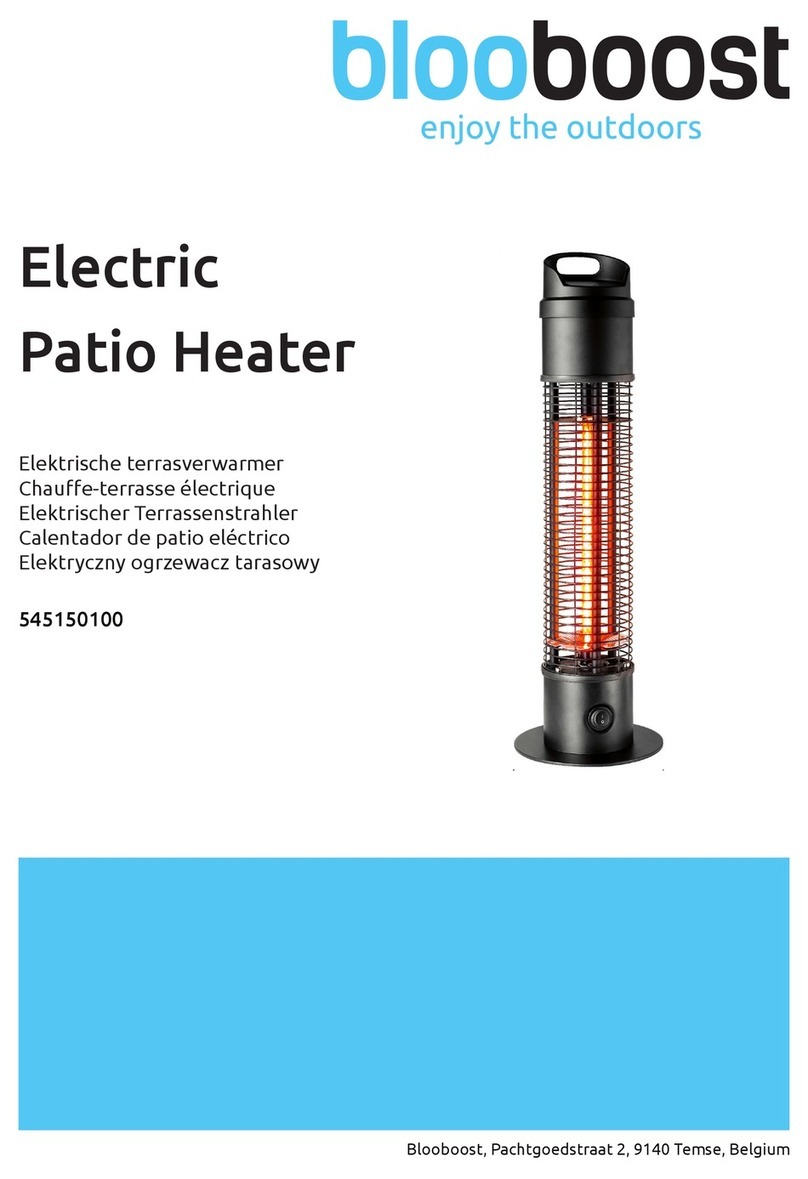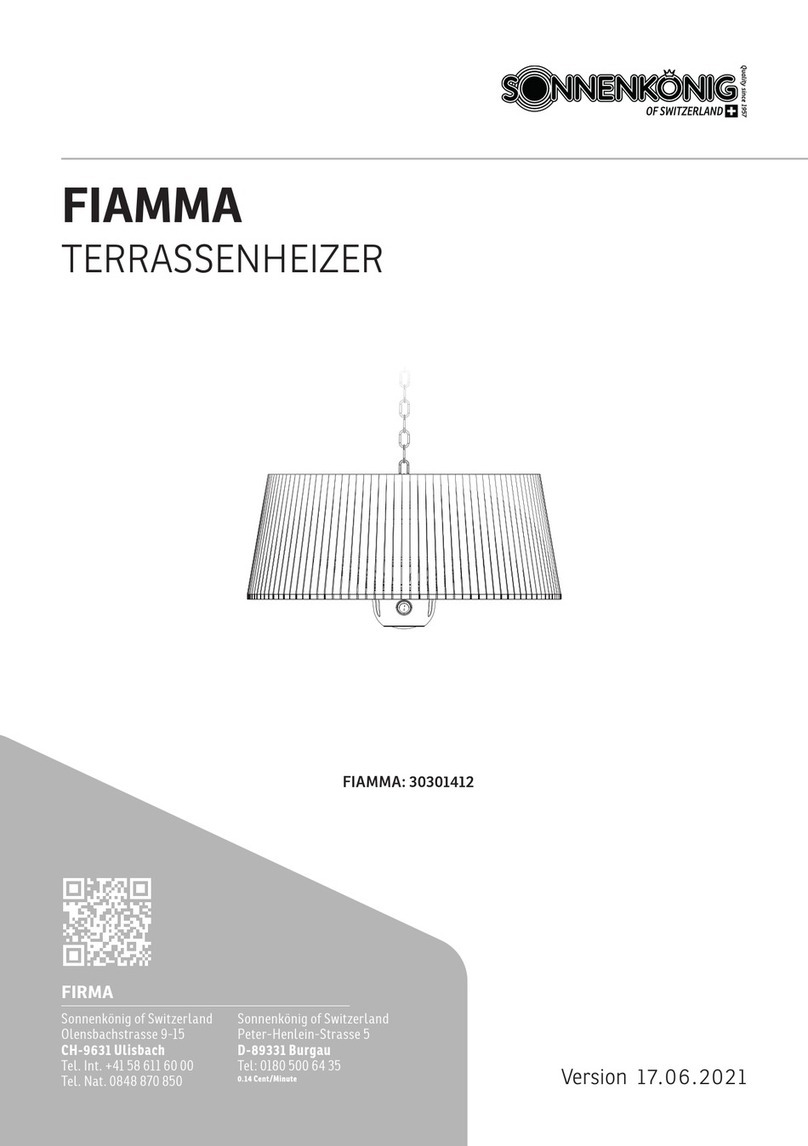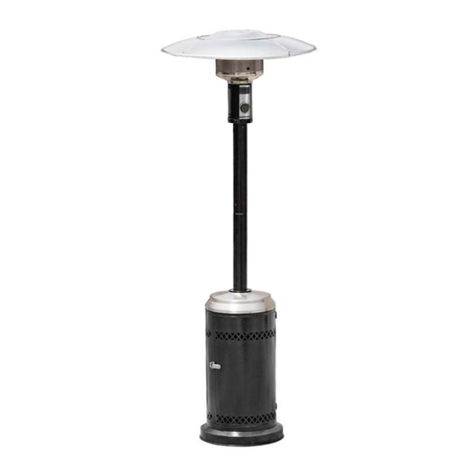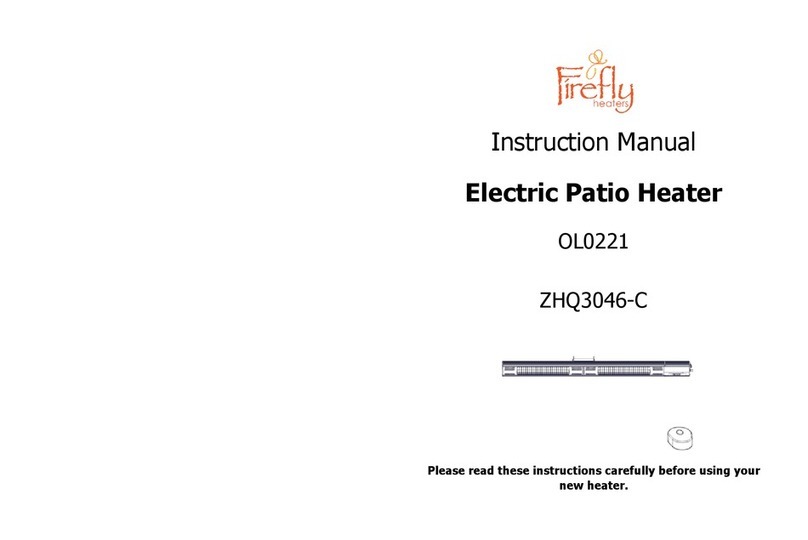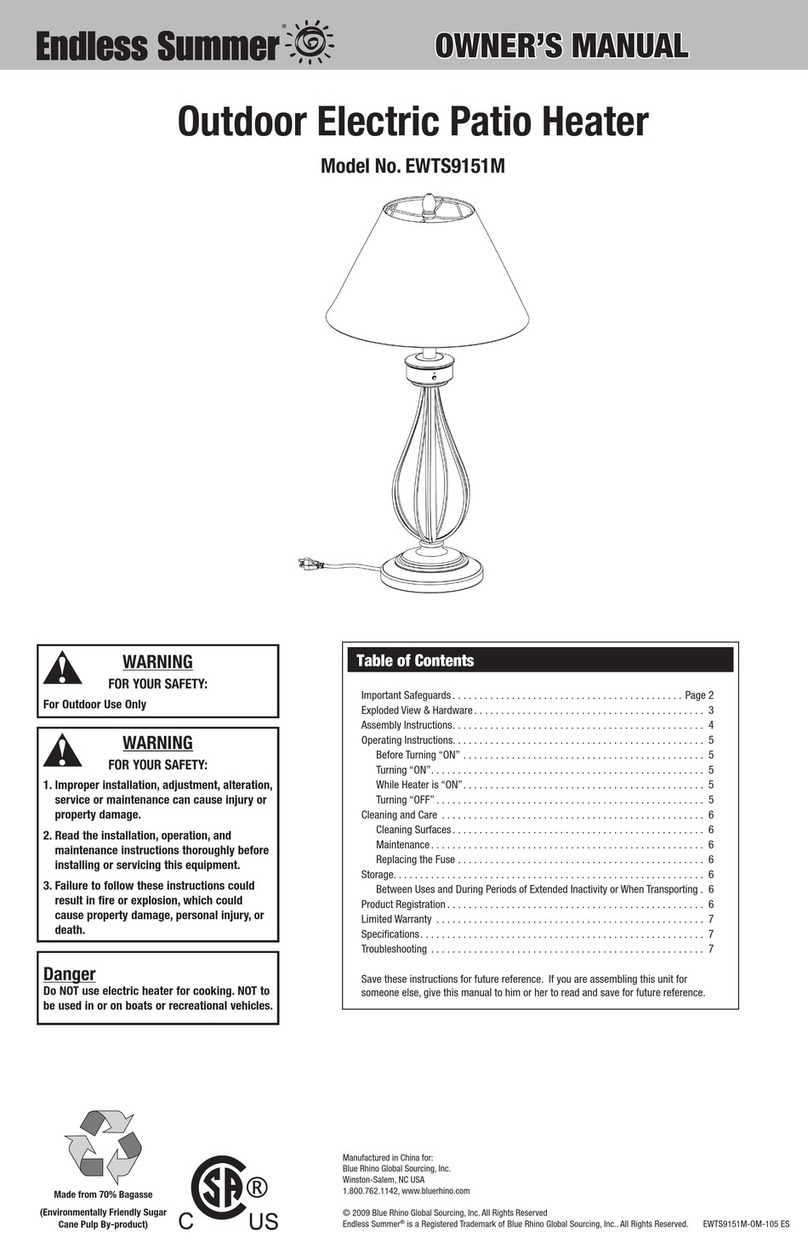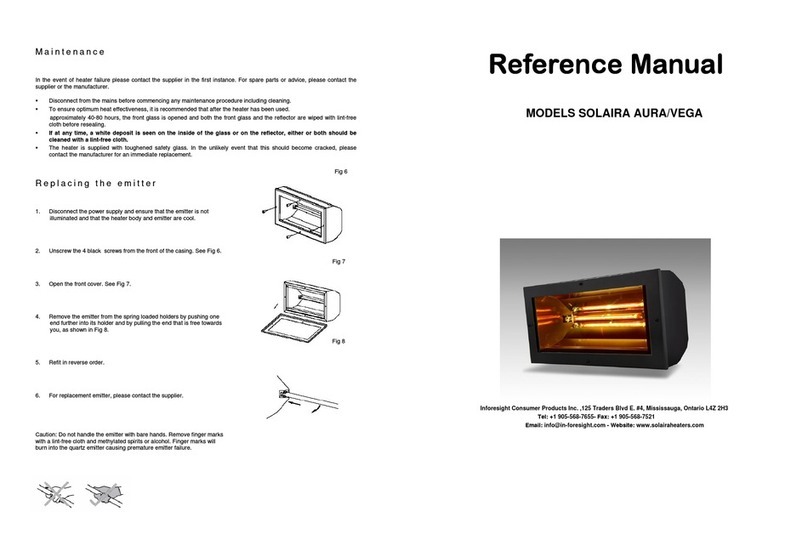habitat et jardin Relax 2 User manual

Relax 2
1351_86826
EN FR ES IT

1351_868
ij;PP
ij;PP
ij;PP
;PP
;;PP
ij;PP
;;PP
;;PP
ij;PP
ij;PP
x1
x1
x1
x3
x3
x1
[
x1
x1
x1
1/1
1/1
1/1
1/1
1/1
1/1
1/1
1/1
1/1
1/1
1
3
5
6
8
2

1351_868
7x8x85mm
ij;PP
ij;PP
ij;PP
ij;PP
;;PP
AA
BB
CC
DD
EE
FF
1/1
1/1
1/1
1/1
1/1
1/1
x3
x3
x16
x5
x3
x3
EN:AFTER-SALES SERVICES/INFORMATION/VIDEO/CONTACT
FR:SAV/INFORMATION/VIDEO/CONTACT
ES: SERVICIO POST-VENTA/INFORMACIÓN/VIDEO/CONTACTO
IT:SERVIZIO ASSISTENZA/INFORMAZIONI/VIDEO/CONTATTO
DE : REPARATUR-SERVICE UND ERSATZTEILE /INFORMATIONEN /VIDEO/KONTAKT
PT: SERVIÇO PÓS-VENDA/INFORMAÇÕES/VIDEO/CONTATO
PL: SERWIS TECHNICZNY/INFORMACJE/WIDEO/KONTAKT
NE: AFTER SALES SERVICE/INFORMATIE/VIDEO/CONTACT
+(ʬʠʧʸʹʩʸʥʺʥʮʫʩʸʥʺʮʩʣʲʤʥʥʩʣʠʥʬʺʷʹʸʲʭ SAV.HABITATETJARDIN.COM
3

WARNING
EN
1. For use outdoors or in amply ventilated
areas.
2.An amply ventilated area must have a mini-
mum of 25% of the surface area open.
3. The surface area is the sum of the walls
surface.
4. This appliance is not fitted with “Atmo-
sphere sensing device”.
WARNING: Read the instructions before
installation and use.
Warning: This appliance must be installed
and the gas cylinder stored in accordance
with the regulations in force.
Warning: Use only the type of gas and the
type of cylinder specified by the manufac-
turer.
Warning: Do not obstruct the ventilation
holes of the cylinder housing.
Warning: In case of violent wind particular
attention must be taken against tilting of the
appliance.
Warning: Do not move the appliance when in
operation.
Warning: Shut off the valve at the gas cylin-
der or the regulator before moving the appli-
ance.
Warning: The
Warning: The heater can’t be used when the
tubing or the flexible hose
must be changed within the prescribed inter-
vals.
heat exchange tube is retracted into cylinder
compartment.
WARNING: The use of this appliance in
enclosed areas can be dangerous and is
PROHIBITED.
4

DEALER GEOCIDS S.A.
32 RUE DE PARADIS 75010
PARIS
Product Name Relax 2 Model No. 1351_86826
(SRPH84)
Nominal Heat
Input 11kW
Consumption 800 g/h (G30) 800 g/h (G30) - 786 g/h (G31)
Category I3B/P(50) I3B/P(37) I3B/P(30) I3+(28-30/37)
Country AT, CH, DE,
SK PL BE, CY, DK, EE,
FI, FR, HU, IT,
LT, NL, NO, SE,
SI, SK, RO, HR,
TR, BG, IS, LU,
MT
BE, CH, CY, CZ,
ES, FR, GB, GR,
IE, IT, LT, LU, LV,
PT, SK, SI
G
Injector diameter(Ø)
as&Pressure 50/50 mbar -
For Gases:
Butane,
Propane and
M
1.40mm 1.51mm 1.67mm 1.67mm
ix of them
37/37 mbar –For
Gases: Butane,
Propane and Mix
of them
30/30 mbar - For
Gases: Butane,
Propane and Mix
of them
28-30/37 mbar –
For Gases: Butane
at 28-30mbar and
Propane at
37mbar
Close the valve of the LPG cylinder or the regulator after use
The use of this appliance in enclosed areas can be dangerous and is PROHIBITED
Read the instructions before using this appliance
The appliance must be installed in accordance with the instructions and local regulations
1) For use outdoors or in amply ventilated areas
2) An amply ventilated area must have a minimum of 25% of the surface area open
3) The surface area is the sum of the surfaces of the walls
MADE IN PRC
0051
5

Find a large, clean area to assemble your
appliance. Please refer to the parts list and
assembly diagram as necessary.
Please use protective gloves when assem-
bling this product.
To avoid losing any small component or
hardware, assemble your product on a hard
level surface that does not have cracks or
openings.
To avoid damage to soft floor or carpet, do
not assemble or move the appliance on soft
floor or carpet.
Follow all steps in order to properly
assemble your product.
Make sure all the plastic protection rip off
before assembling.
Do not force parts together as this can result
in personal injury or damage to the product.
When applicable, tighten all hardware con-
nections by hand first, once the step is com-
pleted, go back and full tighten all hardware.
Caution: Whilst every effort has made in
manufacture of your appliance to remove
any sharp edge, you should handle all com-
ponents with care to avoid accidental injury.
Time to assemble
Number of people required to assemble
One people
Assembly instructions
Tools required
not
supplied not
supplied
30 minutes
6

Further information
Disconnect LP Gas cylinder
Before disconnecting make sure the LP gas
tank valve in “CLOSED”. Disconnect gas line
from LP gas cylinder by turning knob
counterclockwise until it is loose.
For storage and cylinder exchange, discon-
nect hose at the cylinder only, DO NOT
disconnect hose from appliance.
To change the gas cylinder in an amply ven-
tilated area, away from any ignition source
(candle, cigarettes, other flame producing
appliances…).
LPG cylinder not provided. The appliance is
designed to operate with a cylinder of size Ø
31.8 x 58 cm.
This appliance requires a 15 kg butane LPG
cylinder or a 13 kg propane LPG cylinder.
Gas regulator should be the correct one and
be set according to specific gas category
(see Technical data on page 3).
Gas regulator should be approved according
to EN 12864 with proper capacity (g/h), pres-
sure, working temperature and inlet + outlet
connection for the country of destination.
The regulator illustrated on the manual is for
United Kingdom, the regulator in your country
maybe different with the one on the illustration.
Flexible gas rubber pipe should be approved
according to EN 1763-1 with proper inner Ø
to match pipe holders of gas circuit and gas
regulator, pressure and working tempera-
ture.
The length of the hose is 0.41 m and it
should not exceed 0.7 m. The hose shall be
readily visible across its entire length for
inspection after installation.
Danger:
You must have the proper regulator and
cylinder in order for the appliance to operate
safely and efficiently. Use of an incorrect or
faulty regulator is dangerous and will invali-
date any warranty.
Connect LP Gas cylinder
Before connecting, be sure that there is no
debris caught in the head of the LP tank,
head of the regulator valve or in the head
of the burner and burner ports.
Connect gas line to tank by turning knob
clockwise until it stops, make sure that the
tube is not subject to twisting.
After connecting to gas cylinder, a leak test-
ing is necessary.
Important Notes:
7

Leak testing (to be performed in a well-
ventilated area)
Your Outdoor Patio Heater has been
checked for leaks at all the factory made
connections. To check the connection of the
gas hose/regulator/LPG cylinder.
1) Make leak test solution by mixing 1 part
washing up liquid and 3 parts water.
2) Spoon several drops (or use squirt bottle)
of the solution onto the gas hose/regulator
and regulator/LPG cylinder connection.
3) Inspect the connections and look for
bubbles.
4) If no bubbles appear, the connection is
safe.
If bubbles appear, there is leak, loosen and
re-tighten this connection. Repeat the test.
If bubbles form again, stop trying; contact
your local dealer for assistance.
Leak test annually, and whenever the gas
cylinder is removed or replaced.
Note: In the event of gas leakage, the appli-
ance must not be used or if already alight,
the gas supply must be shut off and the
appliance investigated and rectified before it
is used again.
8

Minimum clearance from combustible
surfaces
This heater is primarily used for the heating
of outdoor patios, decks, spas, pools and
open working areas.
Combustible materials are considered to be
wood, compressed parter, plant fibres, plas-
tic or other materials that are capable of
being ignited and burned.
Always make sure that adequate fresh air
ventilation is provided. Follow the spacing
tolerances shown in the following figure right
at all times.
This heater must be placed on level, firm
ground.
Never operate in an explosive atmosphere.
Keep away from areas where gasoline or
other flammable liquids or vapors are stored
or used.
9

LIGHTING PROCEDURE
1. Turn the control knob OFF. Slowly open
the gas cylinder valve.
2. Push in and turn
control knob
anti-clockwise to
IGNITE.
3. Keep control knob depressed for up to 30
seconds until pilot is lit.
If pilot does not light, turn control knob to
OFF and wait 2
minutes between
ignition attempts for
gas to dissipate.
Failure to do this
may result in flame
roll out beyond the
emitter grid.
Note: it is possible
to light the appliance
using a long match, by lighting the burner
through the ignition hole provided.
4. When the pilot is lit keep knob pressed
for up to 20 seconds to heat the thermo-
couple flame sensor, then release it (first
ignition generally takes more time, because
the gas circuit is full of air).
5. If the pilot does not stay lit, repeat steps
2 - 4.
6. Turn knob to LOW position.
7. Adjust the heat input by turning the knob
from the LOW position, to the HIGH posi-
tion, as required.
8. After lighting, turn knob from LOW to
HIGH, position and back, to check flame
stability.
9. In case of accidental break down of the
flame (due to wind or other reasons), a
Flame Safely Device (FSD) will automati-
cally shut-off gas supply within 90 seconds.
Flame Characteristic
The flame pattern at the emitter screen
should be visually checked whenever heater
is operated.
If black soot is accumulating on the emitter
grid or reflector, the heater should be turned
off immediately. The heater should not be
operated again until the unit is serviced and
or repaired.
These lighting instructions must be
followed. An unsafe condition can
occur if they are not followed correctly.
10

Shut down instructions:
1. Push in and turn control knob clockwise
to OFF position.
2. Turn LPG cylinder gas valve clockwise to
OFF position when heater is not in use.
Note: After use, some discolouration of the
emitter screen is nomal.
The event of gas leakage:
1. Turn the
control knob
to OFF position.
2. Turn LPG
cylinder valve
to OFF position.
3. Wait 5 minutes to allow gas to dissipate.
4. If odor continues, immediately call
gas supplier.
Warning: Heater will be hot after use.
Handle with extreme care.
OPERATING PROCEDURE
Note: The burner may be noisy when initially
turned on, To eliminate excessive noise from
the burner, turn the control knob to the LOW
position. Then, turn the knob to the level of
heat desired.
When heater is ON:
Emitter grid will become bright red due to
intense heat. The colour is more visible at
night. Burner will display tongues of blue
flame. These flames should not produce
thick black smoke, indicating an obstruction
of airflow through the burners.
Operation pressure checked:
If the flame is very small, this is because the
supply pressure is not enough. Please refill
gas cylinder.
Re-light:
1. Turn the control knob to OFF position.
2. Wait five (5) minutes before attempting to
relight pilot.
3. Repeat steps beginning with step 2 of the
lighting instruction above.
11

Cleaning and maintenance
To enjoy years of outstanding performance
from your heater make sure you perform the
following maintenance activities on a regular
basis:
Ɣ.HHSH[WHULRUVXUIDFHVFOHDQ
ƔUse warm soapy water for FOHDQLQJ Never
XVHIODPPDEOHRUFRUURVLYHFOHDQLQJDJHQWV
ƔWhile washing your unit, be sure to keep
the area around the burner and pilot assem-
bly dry at all WLPHV If the gas control is
H[SRVHG to water in any way, do NOT try to
XVHLW,WPXVWEHUHSODFHG
ƔAir flow must not be REVWUXFWHG .HHS con-
trols, burner, and circulating air passage-
ways FOHDQ Signs of possible blockage
include:
Gas odor with H[WUHPH yellow tipping of
IODPH
Appliance does NOT reach the desired tem-
SHUDWXUH
$SSOLDQFHJORZLVH[FHVVLYHO\XQHYHQ
$SSOLDQFHPDNHVSRSSLQJQRLVHV
ƔSpiders and insects nest in burner or
RULILFHV This dangerous condition can
damage heater and render it unsafe for XVH
Clean burner holes by using a heavy-duty
pipe FOHDQHU Compressed air may help clear
DZD\VPDOOSDUWLFOHV
ƔCarbon deposits may create a fire KD]DUG
Clean heater dome with warm soapy water if
DQ\FDUERQGHSRVLWVGHYHORS
Check the tubing or the IOH[LEOH hose (at
least once per month and each time the
cylinder is FKDQJHG If it shows signs of
cracking, splitting or other deterioration, it
must be H[FKDQJHG for a new hose of the
VDPHOHQJWKDQGRIWKHHTXLYDOHQWTXDOLW\
STORAGE
Between uses:
Ɣ7XUQWKHFRQWURONQREWR2))SRVLWLRQ
Ɣ7XUQ/3*F\OLQGHUWR2))SRVLWLRQ
ƔStore appliance upright in an area
sheltered from direct contact with inclement
weather (such as rain, sleet, hail, snow, dust
DQGGHEULV
ƔIf desired, cover appliance to protect
H[WHULRUVXUIDFHVDQGWRKHOSSUHYHQWGHEULV
LQDLUSDVVDJHV
During periods of H[WHQGHG inactivity or
when NOTE transporting;
ƔTurn the control knob to 2)) position (full
GLVNEHIRUHFRYHULQJ
ƔDisconnect /3* Cylinder and move to a
secure, well-ventilated location RXWGRRUV
DO NOT store in a location that will H[FHHG
&
ƔThe /3* cylinder must be kept out of
reach of children, and not in a building,
JDUDJHRUDQ\RWKHUHQFORVHGDUHD
ƔStore
Ɣ
Ɣ
Ɣ
5HPRYHVDIHW\VFUHZV5HPRYHNQREIURP
.HHSJDVFKDPEHUGRRUSDUWLDOO\RSHQ7XUQ
FRQWUROSDQHODQGVWRUHLQGRRU
appliance upright in an area shel-
tered from direct contact with inclement
weather (such as rain, sleet, hail, snow, dust
DQGGHEULV
Ɣ$OZD\V remove the battery from the patio
flare if not being used for long periods of time
as battery leakage can cause corrosion in
WKHEDWWHU\LJQLWLRQKRXVLQJ
ƔIf desired, cover appliance to protect H[WH-
rior surfaces and to help prevent debris in air
SDVVDJHV
NOTE
Wait until appliance is cool before
FRYHULQJ
6ORZO\GHVFHQGKHDWH[FKDQJHWXEH
KHDWH[FKDQJHWXEHFORFNZLVH
12

TROUBLESHOOTING
13

ATTENTION
FR
1. Pour une utilisation extérieure ou dans une
zone ventilée
2. Une zone ventilée doit avoir une surface
ouverte de 25% au minimum.
3. La surface totale représente la somme de la
surface de chaque mur.
4. Cet appareil ne dispose pas "d'un dispositif
de détection atmosphérique"
ATTENTION : L'utilisation de cet appareil dans
une zone fermée peut être dangereuse et elle
est INTERDITE.
ATTENTION : Lire la notice avant d'installer et
d'utiliser le produit.
ATTENTION : La bouteille de gaz doit être
stockée selon les règles en vigueurs.
ATTENTION : Uniquement utiliser le type de
gaz et le type de bouteilles spécifiés par le
fabricant.
ATTENTION : Ne pas boucher les trous de
ventilation du cylindre.
ATTENTION : Dans le cas de vents violents
une attention particulière doit être portée
contre l'inclinaison de l'appareil.
ATTENTION : Ne pas déplacer l'appareil
quand il est en train d'être utilisé.
ATTENTION : Fermez la vanne de la bouteille
de gaz ou du détendeur avant de déplacer
l'appareil.
ATTENTION : Le tubage ou le tuyau flexible
doivent être changés en prenant compte des
intervalles prescris.
ATTENTION : Le chauffage ne peut pas être
utilisé quand il est rétracté dans le
compartiment cylindrique.
14

0051
RESPONSIBLE
MIS AU
MARCHE
GEOCIDS S.A.
32 RUE DE PARADIS 75010
PARIS
Dénomination
commerciale Relax 2 Référence 1351_86826
(SRPH84)
Puissance
Nominale 11kW
Consommation 800 g/h (G30) 800 g/h (G30) - 786 g/h (G31)
Catégorie I3B/P(50) I3B/P(37) I3B/P(30) I3+(28-30/37)
Pays AT, CH, DE,
SK PL BE, CY, DK, EE,
FI, FR, HU, IT,
LT, NL, NO, SE,
SI, SK, RO, HR,
TR, BG, IS, LU,
MT
BE, CH, CY, CZ,
ES, FR, GB, GR,
IE, IT, LT, LU, LV,
PT, SK, SI
G
Taille Injecteur(Ø)
az&Pression 50/50 mbar -
For Gases:
Butane,
Propane and
M
1.40mm 1.51mm 1.67mm 1.67mm
ix of them
37/37 mbar –For
Gases: Butane,
Propane and Mix
of them
30/30 mbar - For
Gases: Butane,
Propane and Mix
of them
28-30/37 mbar –
For Gases: Butane
at 28-30mbar and
Propane at
37mbar
Fermer la valve de la bombonne de gaz ou le régulateur après utilisation.
Utiliser cet appareil dans un espace clos est interdit et peut être dangereux.
Lire le mode d’emploi avant d’utiliser l’appareil. »
L’appareil doit être installé en accord avec les instructions et les règles locales.
1) Pour usage externe ou dans un espace ventilé
2) Un minimum de 25% de la surface doit rester ouverte pour que celle-ci soit considérée
comme ventilée.
3) La surface représente la somme de la surface des murs
FABRIQUE EN PRC
15

Temps d’assemblage
Nombre de personne requise pour
l’assemblage
Une personne
Instructions d’assemblage
Outils requis
Non
fourni Non
fourni
30 minutes
Se placer dans une grande zone propre
pour assembler le produit. Faire référence
à la liste des pièces et aux schémas
d’assemblage.
Utilisez des gants de protection pour
assembler le produit.
Pour éviter de perdre des pièces,
assemblez le produit sur une surface dure
et plate qui n’a pas de fissures.
Pour éviter d’endommager un sol mou ou
un tapis, ne pas assembler ou déplacer le
produit sur ce type de sol.
Suivre les étapes dans l’ordre pour
assembler le produit correctement.
Ne pas forcer l’assemblage des pièces car
cela pourrait engendrer des blessures ou
endommager le produit.
Quand cela peut être applicable, tout
d’abord serrer les vis à la main puis
repasser sur toutes les vis les serrant avec
l’outil adapté.
Attention : Il se peut qu’il y ait des bords
coupants, manipuler tous les composants
du produit en faisant très attention pour
éviter de se blesser.
16

Informations complémentaires :
DANGER :
Remarques importantes :
La bouteille de gaz GPL n’est pas fournie.
Cet appareil est conçu pour fonctionner avec
une bouteille de gaz de 31,8 x 58 cm.
Ce produit requiert une bouteille de GPL de
butane de 15kg ou une bouteille de GPL de
propane de 13kg.
Le détendeur doit être adapté à la bouteille
de gaz utilisé selon la catégorie de gaz
employé (voir la fiche technique).
Le détendeur de gaz doit être approuvé selon
la norme EN 12864 avec la bonne capacité
(g/h), la pression adaptée ainsi que la bonne
température de chauffe, l’entrée et la sortie
de la connexion doivent aussi être adaptées
au pays d’utilisation.
Le détendeur illustré dans la notice est utilisé
au Royaume-Uni, le détendeur de votre pays
peut être différent de celui qui est illustré
dans la notice.
Le tuyau en plastique doit être approuvé
selon la norme EN 1763-1 et doit avoir le bon
diamètre pour pouvoir se connecter
correctement au circuit de gaz et au
détendeur ainsi que de pouvoir supporter la
pression et la température.
La longueur du tuyau est de 0,41m et ne
devrait pas excéder 0,7m. Le tuyau doit être
visible sur toute sa longueur pour pouvoir
l’inspecter après l’installation.
Connexion de la bouteille de GPL
Avant d’effectuer la connexion, vérifier qu’il
n’y ait pas de débris dans la tête de la
bouteille de GPL, dans la vanne du
détendeur ainsi que dans le brûleur et ses
ports.
Connecter le tuyau de gaz à la bouteille en
tournant l’attache dans le sens des aiguilles
d’une montre jusqu’à l’arrêt total, s’assurer
que le tuyau ne puisse pas se tordre.
Après l’avoir connecté à la bouteille de gaz,
s’assurer qu’il n’y ait pas de fuite.
Déconnexion de la bouteille de GPL
Avant d’effectuer la déconnexion, s’assurer
que la vanne de la bouteille de gaz soit «
FERMEE ». Déconnecter le tuyau de gaz de
la bouteille en tournant l’attache dans le sens
inverse des aiguilles d’une montre.
Le changement de la bouteille de gaz doit
être effectué dans une zone ventilée, loin de
toute source d’allumage (bougie, cigarette,
autres appareils comportant une flamme…)
Il faut avoir un détendeur et une bouteille de
gaz adapté pour que l’appareil fonctionne
correctement et en toute sécurité. L’utilisation
d’un mauvais détendeur ou d’un détendeur
inadapté est dangereux et cela annulera
toute garantie.
17

Vérification des fuites (doit être effectué dans
une zone ventilée)
Le chauffage d’extérieur a été testé contre les
fuites pour toutes les connexions qui ont été
réalisées au sein de l’usine. Il reste à vérifier les
connexions du tuyau/du détendeur/de la bouteille
de GPL.
1) Faire un test en faisant une solution aqueuse
en mélangeant 1 part de liquide vaisselle et 3
parts d’eau.
2) Appliquez quelques gouttes (ou utilisez une
bouteille de jet) de la solution sur le
tuyau/détendeur et sur le détendeur/connexions
de la bouteille de GPL.
3) Inspectez les connexions et cherchez les
bulles.
4) S’il n’y a pas de bulles alors les connexions
sont sécurisées.
Si des bulles se forment alors il y a une fuite,
desserrez et resserrez cette connexion. Répétez
le test.
Si des bulles se forment à nouveau alors arrêtez
d’essayer et appelez le fournisseur de gaz local
pour obtenir une assistance. Effectuez la
vérification tous les ans ou à chaque fois que la
bouteille de gaz est remplacée.
Remarque : S’il y a une fuite de gaz le produit ne
doit pas être utilisé. Si le produit est déjà allumé,
le gaz doit être fermé immédiatement. L‘appareil
doit alors être inspecté et réparé avant d’être
réutilisé.
18

Distance minimum autorisée des surfaces
combustibles
Ce chauffage est principalement utilisé pour
chauffer des terrasses, des pontons, des
spas, des piscines et des zones de travail
extérieures.
Les matériaux combustibles peuvent être le
bois, la mélanine de bois, les fibres de
plantes, le plastique et d’autres matériaux qui
peuvent être brulés.
Toujours s’assurer qu’une ventilation d’air
adéquat soit présente. Toujours respecter la
distance de sécurité illustrée sur le schéma à
droite.
Ce chauffage doit être placé à plat sur un sol
dur.
Ne jamais utiliser dans un endroit où
l’atmosphère est explosive.
Tenir loin des zones où sont stockés/utilisés
l’essence ou d’autres vapeurs et liquides
inflammables.
19

PROCEDURE D’ALLUMAGE
1. Tournez le bouton de control sur OFF. Ouvrir
doucement la vanne
de la bouteille de gaz.
2. Appuyez et tournez
le bouton de contrôle
dans le sens inverse
des aiguilles d’une montre jusqu’au IGNITE.
3. Maintenir appuyé le bouton de contrôle
pendant 30 secondes pour allumer le brûleur.
Si le brûleur ne s’allume pas, remettre le bouton
sur OFF et attendre 2
minutes entre chaque
essai pour que le gaz
se dissipe. Si vous ne
faites pas cela les
flammes pourraient
sortir de la grille
protectrice.
Remarque : Il est
possible d’allumer l’appareil en utilisant une
grande allumette en la faisant passé par le trou
prévu à cet effet.
4. Quand le brûleur est allumé, maintenir
pendant 20 secondes pour chauffer le capteur
de flamme thermocouple, puis relâchez (le
premier allumage met plus de temps car le
circuit de gaz est rempli d’air).
5. Si le brûleur ne reste pas allumé, répétez les
étapes 2 à 4.
6. Tournez le bouton sur LOW.
7. Ajustez la puissance de chaleur en tournant
le bouton de LOW à HIGH selon la puissance
désirée.
8. Après l’allumage, tournez le bouton de LOW
à HIGH plusieurs fois pour vérifier la stabilité de
la flamme.
9. Dans le cas où la flamme s’éteindrait
accidentellement (à cause du vent ou autres
facteurs), un produit équipé du FSD (Flame
Safely Device) éteindra automatiquement
l’arrivée de gaz après 90 secondes.
Caractéristique de flamme
Vérifier si une petite flamme sur l'écran de
l'émetteur apparait lors que le parasol est
utilisé.
Si la suie noire se colle progressivement sur
la grille de l'émetteur ou du réflecteur, le
parasol doit être éteint immédiatement. Le
parasol ne doit pas être utilisé à nouveau
jusqu'à ce que l'appareil soit entretenu et /
ou réparé.
L’instruction d’allumage doit être
respectée. Une dangereuse situation
peut se produire si elle n’est pas
strictement suivie.
20
This manual suits for next models
1
Table of contents
Languages:
Other habitat et jardin Patio Heater manuals
Popular Patio Heater manuals by other brands

Heat-N-Glo
Heat-N-Glo PATIO CAMPFIRE Installation & operating instructions

Balkene Home
Balkene Home FireSense Bessemer Patio Fireplace manual
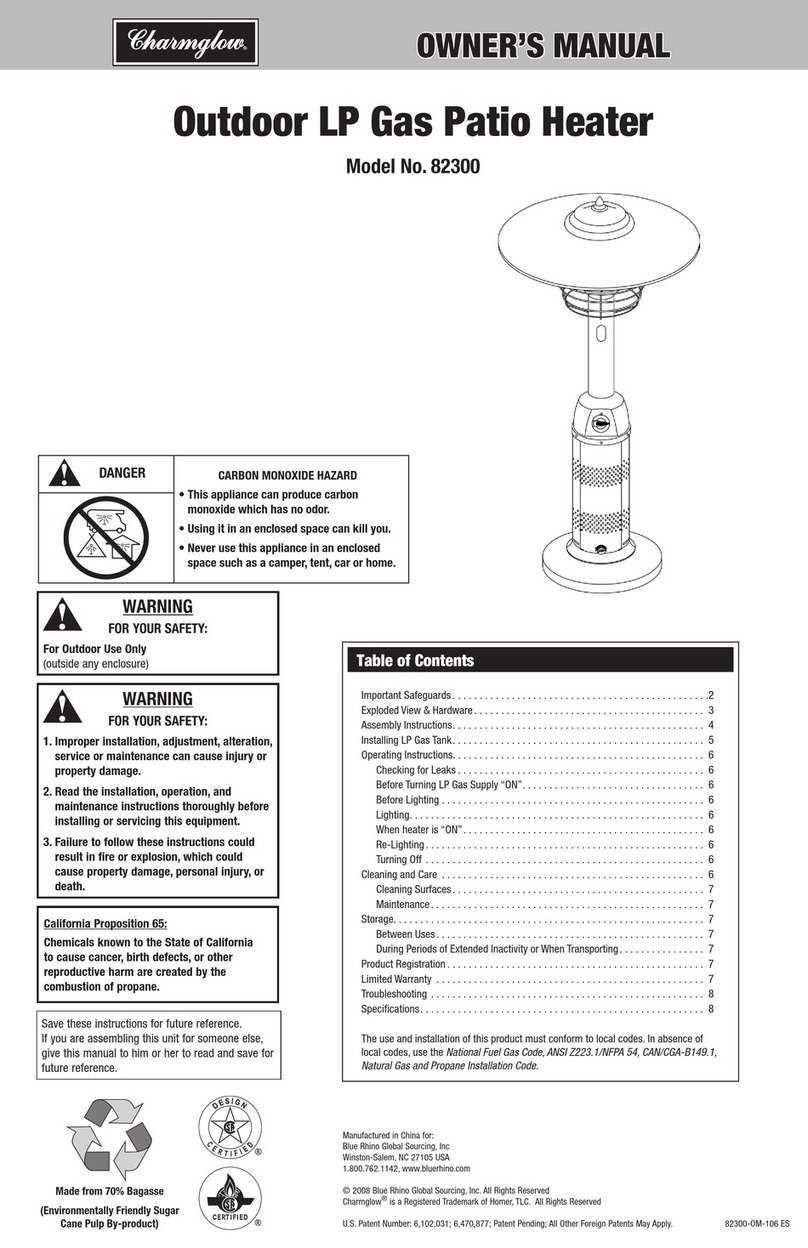
Charmglow
Charmglow 82300 owner's manual
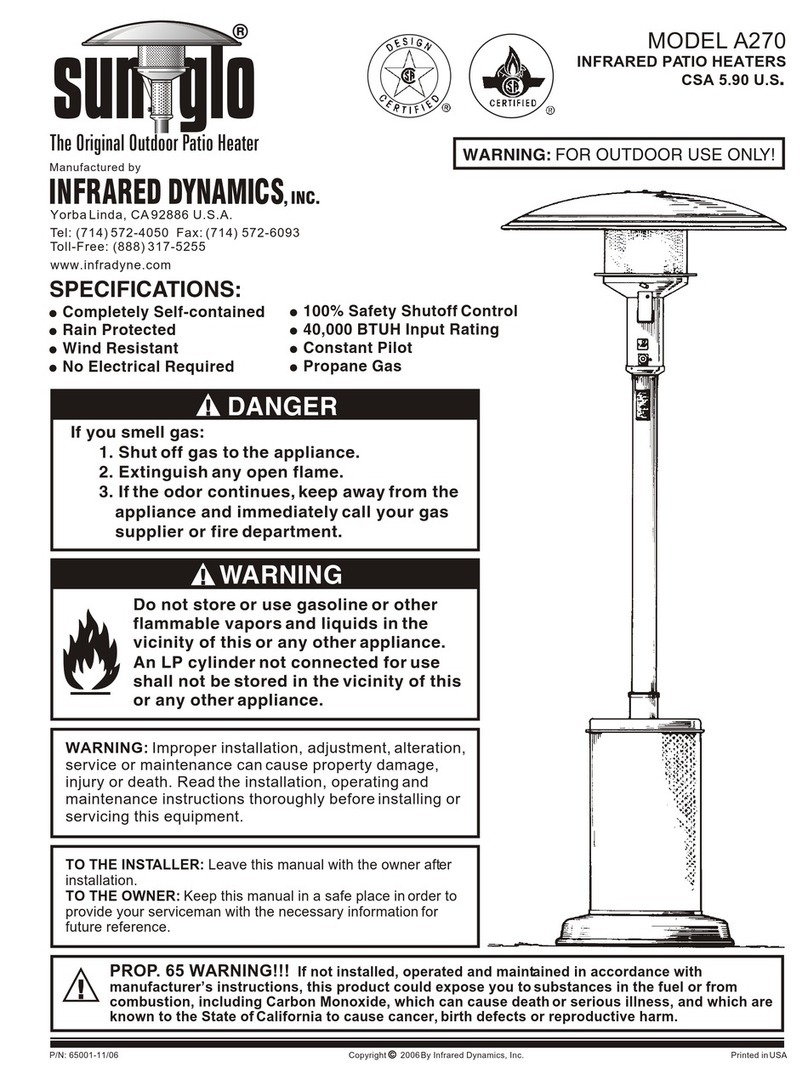
SunGlo
SunGlo A270 Installation, operation and maintenance instructions

Alke
Alke PH-4 User and installation manual
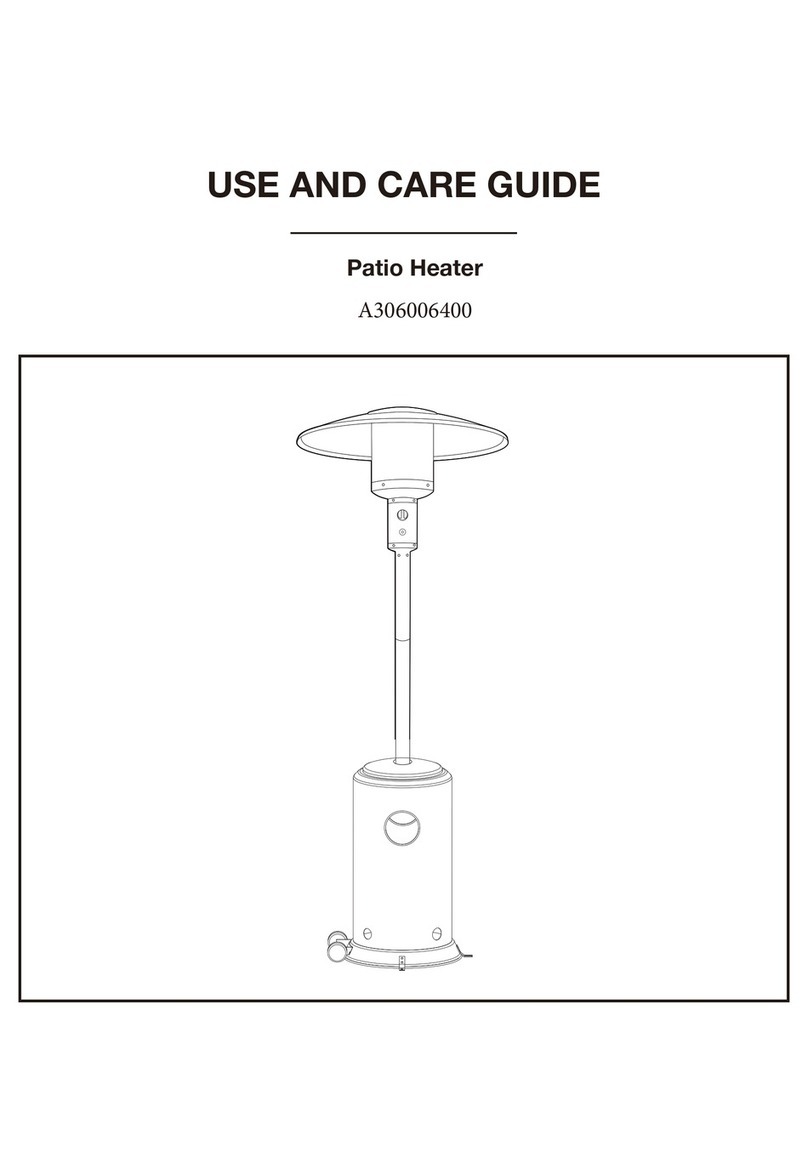
Sunjoy
Sunjoy A306006400 Use and care guide


